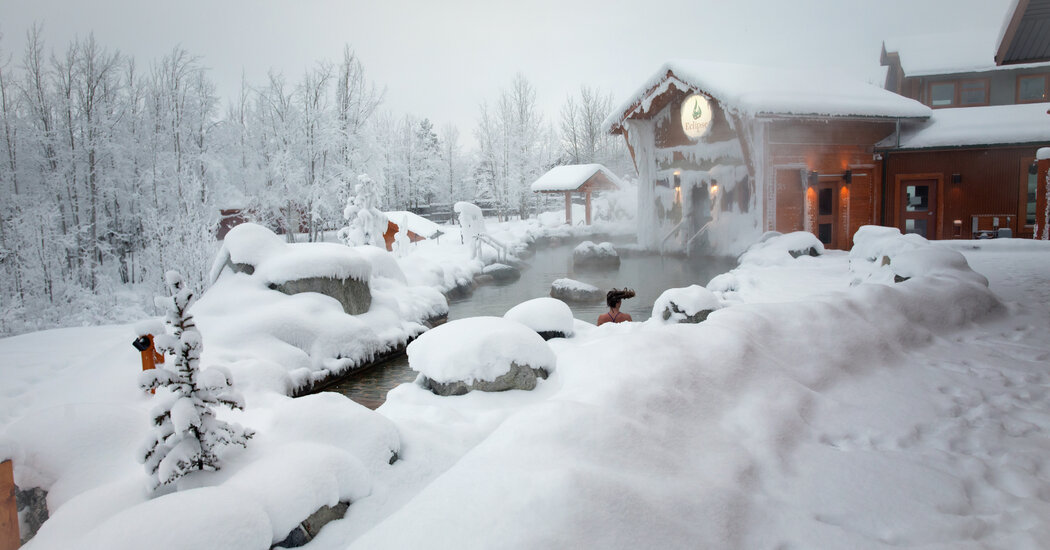
Frozen hair is a nuisance in most places, but at the Eclipse Nordic Hot Springs in Whitehorse, Yukon, it’s a higher calling. Every winter, hundreds of people try to freeze their hair into a troll-doll-like coif for a chance to win cash prizes of 2,000 Canadian dollars, or nearly $1,500.
And just in case that doesn’t give you goose bumps, Andrew Umbrich, 36, the hot springs’ owner and general manager, has opened a designated snow-rolling area to let bathers cool off without banging into the rocks surrounding the pool. “I have to give them a safe place to roll because they’re going to kill themselves on these boulders,” Mr. Umbrich said.
These are the kinds of safety considerations that tend to arise in rugged places like the Yukon, a roughly 186,000-square-mile wedge of northwestern Canada that extends from British Columbia across the Arctic Circle to the Beaufort Sea. Its long winter nights and boreal location make it a prime destination for viewing the northern lights, and with the sun’s magnetic field approaching the peak of its 11-year cycle, sending more charged particles into the Earth’s upper atmosphere, 2024 could bring the best displays in years (one reason Whitehorse landed on this year’s New York Times 52 Places to Go list).
Those long subarctic nights also make for plenty of pent-up energy, which Yukoners let off just as the sun begins to make its resurgence in February, with the joyous — and decidedly offbeat — Yukon Rendezvous, a festival in Whitehorse that celebrates its 60th anniversary this year from Feb. 9 to 25 with events like chain saw chucking and flour packing, not to mention the hair freezing.





